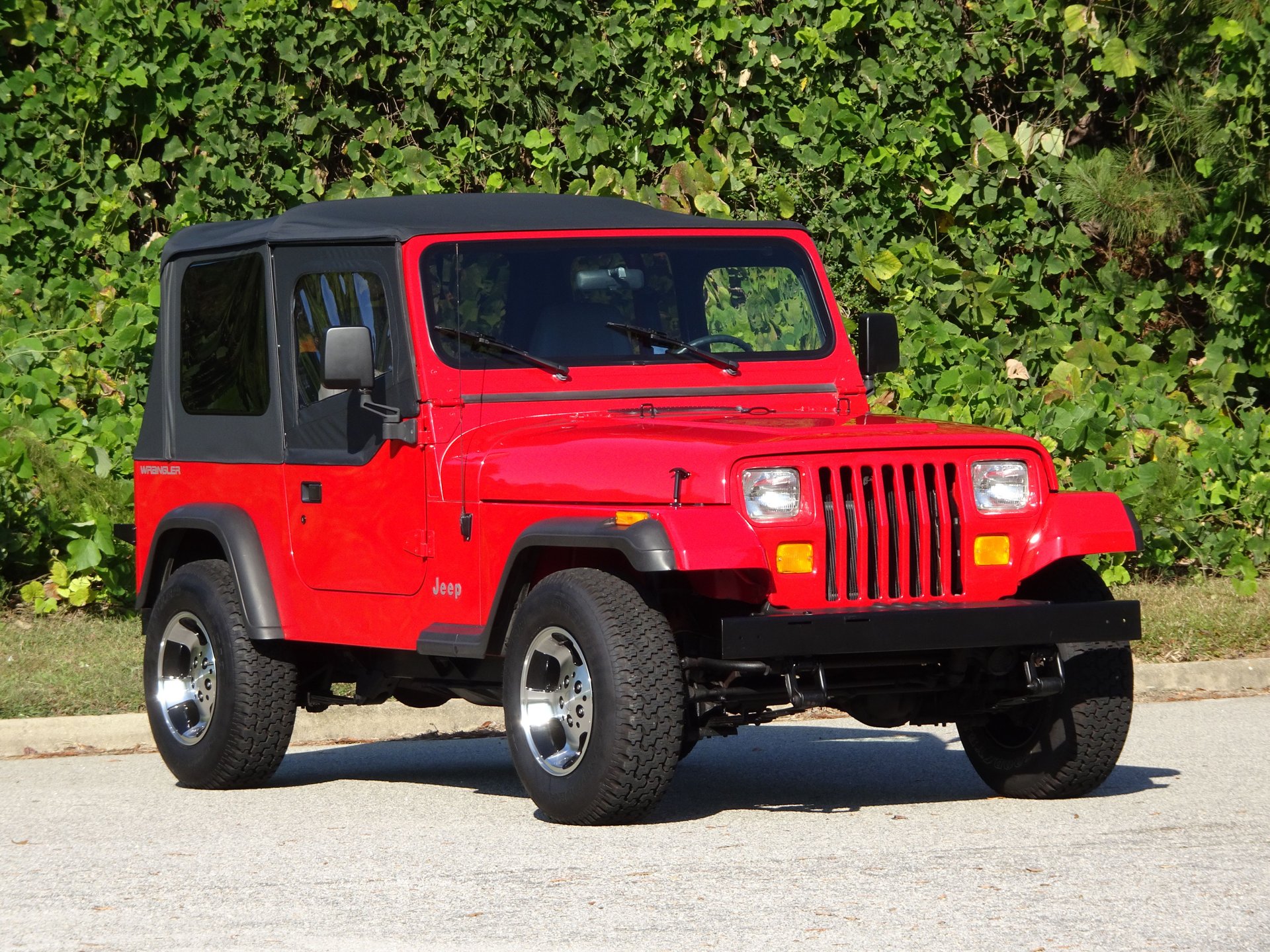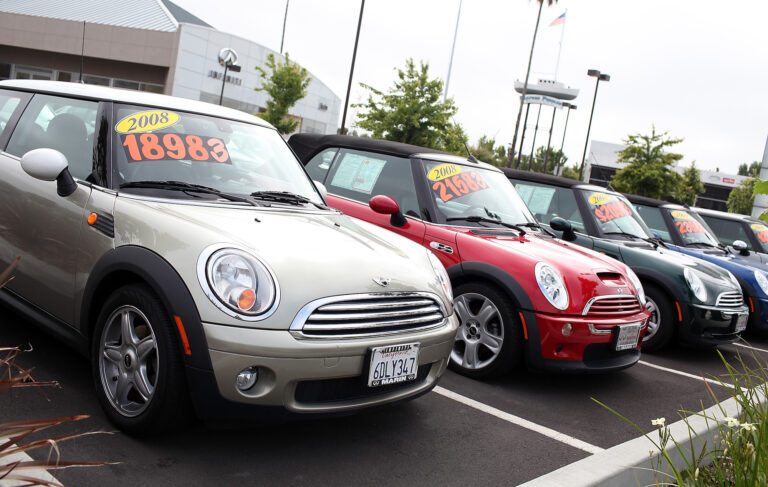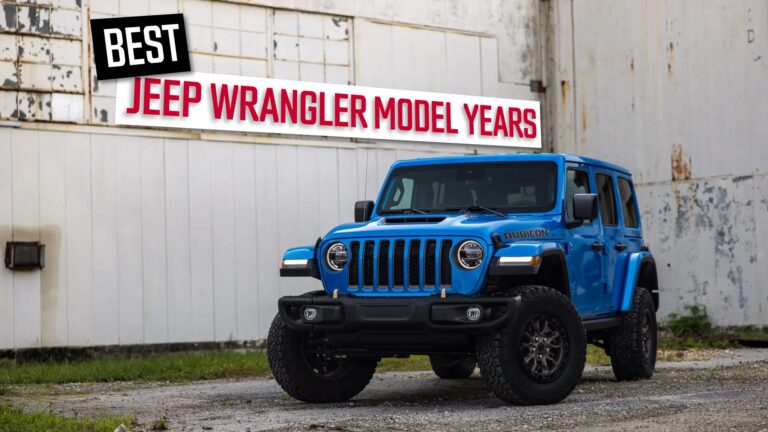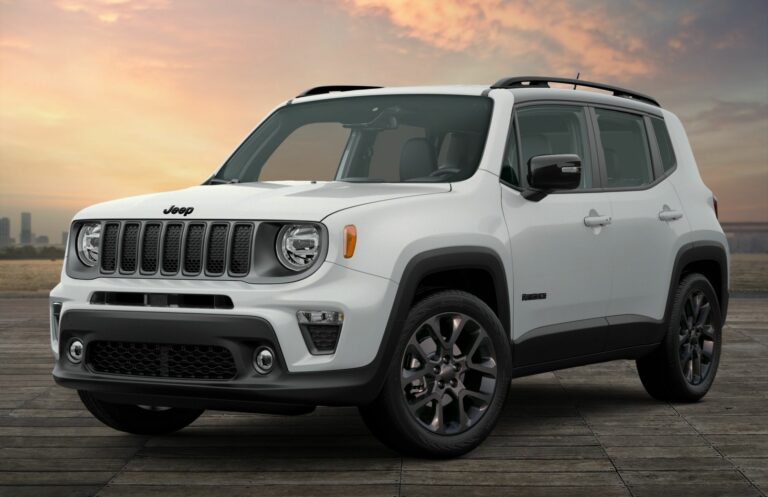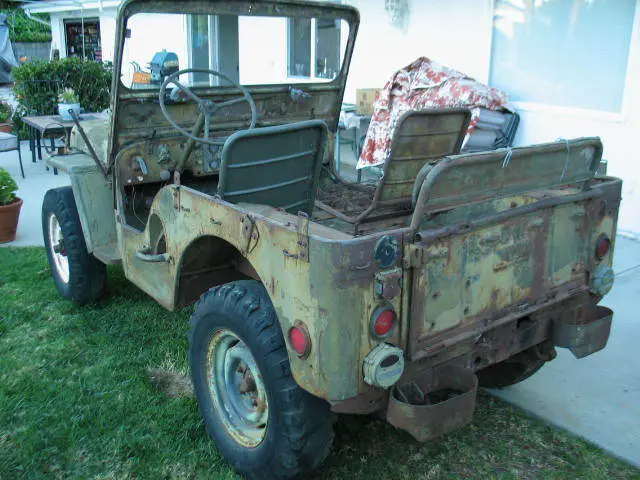Wrangler Jeep Yj: The Square-Eyed Icon of Off-Road Heritage
Wrangler Jeep Yj: The Square-Eyed Icon of Off-Road Heritage jeeps.truckstrend.com
The Jeep Wrangler YJ, produced from 1987 to 1995, stands as a pivotal chapter in the storied history of the legendary off-road brand. As the first vehicle to bear the "Wrangler" name, it faced the monumental task of succeeding the beloved and iconic CJ series. While initially met with controversy, primarily due to its distinctive square headlights, the YJ quickly carved out its own legacy, blending the rugged simplicity of its predecessors with a touch more on-road refinement. Today, the YJ is celebrated by enthusiasts as a highly capable and endlessly customizable off-road machine, a true bridge between Jeep’s raw, utilitarian past and its more modern iterations.
This comprehensive guide will delve into the various facets of the Wrangler Jeep YJ, exploring its history, unique features, mechanical specifications, performance characteristics, common issues, and the enduring appeal that continues to make it a sought-after vehicle for adventurers and collectors alike.
Wrangler Jeep Yj: The Square-Eyed Icon of Off-Road Heritage
The Genesis of a Legend: History and Legacy
The journey of the Wrangler YJ began in the mid-1980s when American Motors Corporation (AMC), then owner of Jeep, sought to modernize the venerable CJ line. The CJ, while immensely popular, was becoming increasingly outdated in terms of safety regulations and on-road comfort. The goal was to create a vehicle that retained the core off-road prowess and open-air freedom of the CJ but offered a more stable and refined driving experience for the burgeoning SUV market.
Introduced in 1987, the YJ was an immediate departure from the CJ’s circular headlamps, opting instead for rectangular ones – a decision driven by AMC’s desire to align the Jeep’s styling with its other corporate offerings and to differentiate it from the outgoing CJ. This choice proved polarizing, sparking a debate among purists that continues to echo in Jeep circles today. Despite the aesthetic controversy, the YJ introduced wider leaf springs, which improved stability and ride quality over the CJ, and a more comfortable interior.
Chrysler acquired AMC in 1987, inheriting the Jeep brand and the YJ project. Under Chrysler’s stewardship, the YJ continued to evolve, most notably receiving the legendary 4.0-liter High Output (HO) inline-six engine in 1991, which significantly boosted its performance. The YJ’s production run concluded in 1995, making way for the TJ Wrangler, which famously reverted to round headlights and introduced a coil-spring suspension system. Nevertheless, the YJ laid the groundwork for the modern Wrangler, proving that the iconic Jeep spirit could adapt and thrive in a changing automotive landscape.
Distinctive Features and Design Philosophy
The Wrangler YJ’s design is a blend of utilitarian purpose and subtle modernization for its time.
- Square Headlights: Undeniably its most defining and often debated feature, the rectangular headlights are a visual hallmark that instantly distinguishes a YJ from any other Wrangler generation. While some viewed them as sacrilege, they are now a nostalgic identifier.
- Leaf Spring Suspension: Unlike the coil-sprung Wranglers that followed, the YJ retained leaf springs at all four corners, a direct carryover from the CJ. This design, while offering a stiffer ride, is known for its simplicity, durability, and ease of modification for increased lift and articulation.
- Wider Stance: Compared to the CJ, the YJ featured a wider track, contributing to improved stability on and off-road. This wider footprint was a key factor in its enhanced handling characteristics.
- Interior Evolution: While still rugged and designed for easy cleaning, the YJ’s interior offered more comfort and refinement than the CJ. Early models had a simpler dash, evolving to a more modern, padded dashboard by 1992. Features like full doors with roll-up windows (optional), air conditioning, and a slightly more ergonomic layout made it more amenable to daily driving.
- Removable Tops and Doors: True to Jeep tradition, the YJ offered the quintessential open-air experience. It came standard with a soft top, with an optional hardtop available for better weather protection and security. All doors were removable, and the windshield could be folded down, connecting the driver directly to the environment.
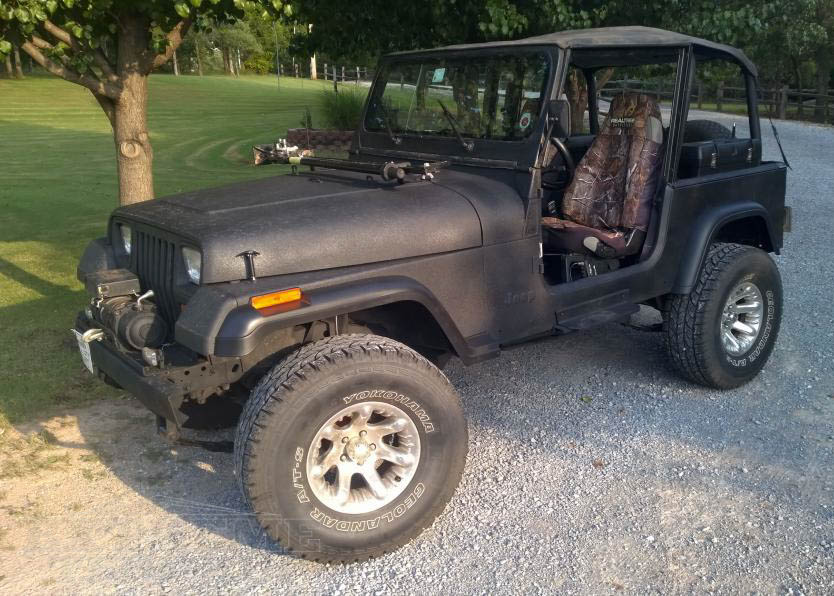
Engine and Drivetrain Options: Powering the Adventure
The YJ was offered with a variety of engine and transmission configurations throughout its production run, each contributing to different driving experiences.
-
Engines:
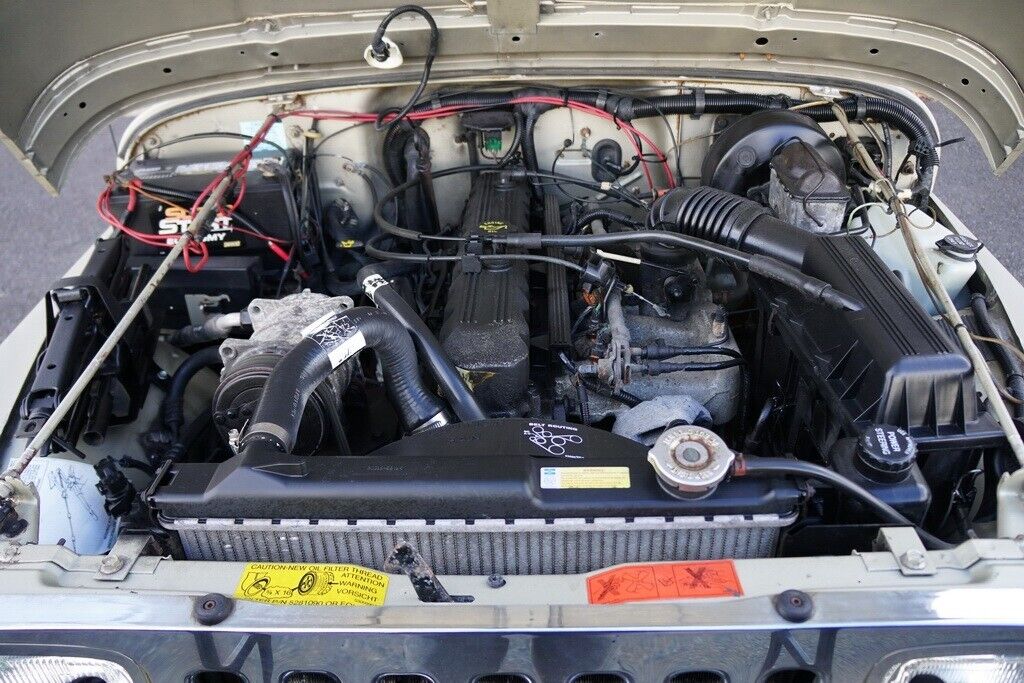
- 2.5L AMC 150 I4: This four-cylinder engine was the base option, offering decent fuel economy but modest power. Early versions used throttle-body injection (TBI), later switching to multi-port injection (MPI) for improved performance and efficiency. It’s a reliable engine for light duty and trail cruising but can feel underpowered on highways.
- 4.2L AMC 258 I6: Available from 1987 to 1990, this carbureted inline-six was known for its robust torque output, making it excellent for low-speed off-roading. However, its carburetor could be finicky, particularly at angles or higher altitudes, leading many owners to convert it to aftermarket fuel injection systems.
- 4.0L AMC 242 I6 (High Output): Introduced in 1991, this multi-port injected engine is the undisputed workhorse and most sought-after powerplant for the YJ. Renowned for its legendary reliability, strong torque, and adequate horsepower, the 4.0L HO transformed the YJ’s highway manners and off-road capability, becoming a benchmark for Jeep engines.
-
Transmissions:
- Manual: Early YJs with the 2.5L and 4.2L engines came with the Peugeot BA-10/5 five-speed manual, which is notorious for its fragility. Later, the more robust Aisin AX-5 (2.5L) and Aisin AX-15 (4.0L/4.2L) five-speed manuals were introduced, significantly improving reliability.
- Automatic: The YJ offered Chrysler’s three-speed automatic transmissions: the 904 for the 2.5L and the Torqueflite 999 for the 4.0L and 4.2L engines. These automatics are known for their simplicity and durability.
-
Transfer Cases:
- NP207 (Command-Trac): Found in early YJs, a part-time 4WD system.
- NP231 (Command-Trac): The more common and highly regarded transfer case in later YJs, known for its strength and wide aftermarket support. It offers 2HI, 4HI, and 4LO settings.
-
Axles: Most YJs came with a Dana 30 front axle and a Dana 35 rear axle. While adequate for stock or mildly modified setups, the Dana 35 is often considered a weak point for serious off-roading, particularly with larger tires or aggressive driving. A stronger Dana 44 rear axle was a rare option on some models.
On-Road Performance and Daily Driving Considerations
Driving a YJ on the road is an experience that harkens back to a simpler automotive era. It’s not about luxury or refinement, but raw, mechanical engagement.
- Ride Quality: Due to its leaf spring suspension, the YJ’s ride can be stiff and bumpy, especially over rough pavement or potholes. It’s less forgiving than modern vehicles, and passengers will feel more of the road.
- Handling: The steering can feel vague, and there’s noticeable body roll in turns due to its high center of gravity and soft suspension. It requires more driver input than contemporary SUVs and is not designed for high-speed cornering.
- Noise Levels: With a soft top, wind noise is prevalent, and road noise from aggressive tires can be significant. Hardtops offer some improvement but it’s still far from a quiet cabin.
- Fuel Economy: Generally poor, especially with the 4.0L engine or if equipped with larger tires and lift kits. The carbureted 4.2L can be particularly thirsty.
- Practicality: Cargo space is limited, especially with the rear seat in place. The rear seat itself is not spacious and is best suited for short trips or children.
Despite these characteristics, many YJ owners find its direct, unfiltered driving experience charming. It forces you to be more engaged with the road and your surroundings, creating a unique bond between driver and machine.
Off-Road Prowess and Capability
Where the YJ truly shines is off the paved path. Its fundamental design makes it an inherently capable off-road vehicle.
- Short Wheelbase: Enables excellent break-over angles and maneuverability in tight trails.
- Solid Axles: Provide superior articulation and durability compared to independent suspension systems, keeping tires on the ground for maximum traction.
- Approach/Departure Angles: The YJ boasts impressive angles, allowing it to climb steep obstacles and descend without scraping.
- Simple Mechanicals: The leaf spring suspension, robust frame, and straightforward drivetrain make it incredibly durable and easy to repair in the field.
- Mod-Friendly: The YJ’s simple design is a blank canvas for modifications. Lifts are straightforward, and the aftermarket is flooded with parts to enhance every aspect of its off-road performance.
Practical Advice: For serious off-roading, consider upgrading the Dana 35 rear axle to a Dana 44, Ford 8.8, or even a Dana 60 for increased strength. Re-gearing the axles is also highly recommended when installing larger tires to restore lost power and improve crawl ratio.
Modifications and Customization: A Blank Canvas
The YJ’s popularity as an off-road platform is largely due to its unparalleled modularity and the vast aftermarket support.
- Suspension Lifts: The most common modification. Options range from mild shackle lifts for tire clearance to significant spring-over-axle (SOA) conversions for extreme articulation and ground clearance.
- Tires: Upgrading to larger, more aggressive off-road tires (e.g., 33-inch, 35-inch, or even larger) is standard practice.
- Armor: Skid plates for the transfer case and fuel tank, heavy-duty bumpers with winches, and rock sliders protect the vital components from trail damage.
- Drivetrain Upgrades: Axle swaps, locker installations (limited-slip or selectable), and lower gearing for improved crawl ratios are popular for dedicated trail rigs.
- Engine Swaps: For those seeking more power, V8 engine swaps (like the GM LS or Ford 5.0) are common, though they require significant fabrication.
- Interior and Exterior Enhancements: From upgraded seats and stereo systems to custom paint jobs and fender flares, owners personalize their YJs to reflect their style and needs.
Common Issues and Maintenance Tips
Like any vintage vehicle, the YJ has its quirks and common issues that prospective and current owners should be aware of.
- Rust: The number one enemy of the YJ. Inspect the frame meticulously, especially around the skid plate mounts, spring perches, and body mounts. Also check the body tub (floorboards, rocker panels, wheel wells) and fenders.
- Leaf Spring Sag: Over time, the leaf springs can sag, especially if the vehicle has carried heavy loads or been heavily modified. This leads to a rougher ride and reduced ground clearance.
- Carburetor Issues (4.2L): The Carter BBD carburetor on the 4.2L engine is notorious for vacuum leaks, tuning difficulties, and performance issues, especially at angles off-road. Many opt for aftermarket fuel injection conversions (e.g., Howell, Mopar MPI) or swap to the 4.0L.
- Peugeot BA-10/5 Transmission: Found in early YJs, this manual transmission is prone to bearing failure and overall weakness. Many owners swap it for the AX-15 or an automatic.
- Dana 35 Rear Axle: As mentioned, this axle is a weak link for serious off-road use, prone to breaking shafts or ring and pinion gears.
- Steering Play: Worn steering components (tie rod ends, drag link, steering box) can lead to excessive play and a wandering feel on the road.
- Electrical Gremlins: Age-related wiring issues, ground problems, and failing sensors can cause intermittent electrical problems.
Maintenance Tips: Regular fluid changes (engine oil, transmission, transfer case, differentials), greasing all zerk fittings (especially U-joints), and inspecting for rust are crucial. Address small issues promptly before they escalate.
Buying and Owning a YJ Today
Owning a Wrangler YJ in the 21st century is more than just owning a vehicle; it’s a commitment to a lifestyle and a piece of automotive history.
- What to Look For When Buying:
- Rust: This cannot be stressed enough. Thoroughly inspect the frame, body, and common rust spots.
- Engine Condition: Listen for unusual noises, check for leaks, and ensure it starts and runs smoothly. For 4.2L models, ask about fuel injection conversions. For 4.0L, check for the "High Output" badge.
- Transmission and Transfer Case: Test all gears, including 4HI and 4LO. Listen for grinding or clunking.
- Suspension: Check for sagging springs, worn bushings, and broken shocks.
- Modifications: Understand what modifications have been done. Well-executed mods can add value; poorly done ones can be a nightmare.
- Documentation: Service records and receipts for major work are a big plus.
- Cost of Ownership: Fuel costs can be high. Parts are generally affordable and widely available due to the YJ’s popularity and commonality with other Jeep models. Insurance is usually reasonable.
- Community: The YJ has a passionate and active owner community. Online forums, social media groups, and local Jeep clubs offer invaluable resources for maintenance advice, modification ideas, and camaraderie.
- Investment Potential: Well-maintained, unmolested, or professionally restored YJs are slowly appreciating in value, especially the later 4.0L models. They represent a tangible piece of Jeep heritage.
Wrangler Jeep YJ: Estimated Price Guide (Used Market)
Please note that these are estimated prices for the used market and can vary significantly based on geographic location, vehicle condition, mileage, specific year, trim level, engine, transmission, and the extent and quality of modifications. Original MSRPs are provided for historical context.
| Category | Original MSRP (Approx.) | Current Used Market Value (Estimated) | Key Factors Influencing Price |
|---|---|---|---|
| New (1987-1995) | $10,000 – $18,000 | N/A | Trim (S, Sahara, Renegade, Islander), Engine, Options |
| Used: Parts Car/Poor | N/A | $1,000 – $3,000 | Significant rust, non-running, major mechanical issues, title issues |
| Used: Fair/Driver | N/A | $4,000 – $8,000 | Running, drivable, some rust, minor mechanical issues, high mileage |
| Used: Good/Well-Maintained | N/A | $9,000 – $15,000 | Minimal rust, good mechanicals, well-maintained, potentially some tasteful mods |
| Used: Excellent/Restored/Highly Modified | N/A | $16,000 – $30,000+ | Rust-free, fully restored, professional mechanical condition, desirable engine (4.0L), high-quality aftermarket upgrades |
Disclaimer: This table provides a general guideline. Always conduct thorough research, get a pre-purchase inspection from a trusted mechanic, and verify the vehicle’s history before making a purchase.
Frequently Asked Questions (FAQ) about the Wrangler Jeep YJ
Q1: What does "YJ" stand for?
A: "YJ" is simply the internal chassis code designated by Jeep for this generation of the Wrangler, much like "TJ," "JK," and "JL" are for subsequent generations. It doesn’t stand for any specific words.
Q2: Why do YJs have square headlights?
A: The decision for square headlights was made by AMC (American Motors Corporation), Jeep’s owner at the time, to modernize the Jeep’s appearance and differentiate it from the outgoing CJ series. It was also an attempt to align the Jeep’s design with other AMC vehicles of the era.
Q3: Is the 4.2L carbureted engine reliable?
A: The 4.2L (258ci) engine itself is very robust and known for its torque. However, the factory Carter BBD carburetor it came with is often problematic, prone to vacuum leaks and poor performance, especially when off-roading at angles. Many owners convert to aftermarket fuel injection systems for better reliability and efficiency.
Q4: Is the Dana 35 rear axle strong enough for off-roading?
A: The Dana 35 rear axle is generally considered the weakest link in the YJ’s drivetrain for serious off-roading. While adequate for stock or mild use, it’s prone to failure (bent axle tubes, broken shafts) when subjected to larger tires (33 inches or more), aggressive driving, or lockers. Many enthusiasts upgrade to a stronger axle like a Dana 44 or Ford 8.8.
Q5: What’s the best year for a YJ?
A: Most enthusiasts consider the 1991-1995 YJs to be the most desirable. These models came with the more powerful and reliable 4.0L High Output (HO) inline-six engine and the stronger Aisin AX-15 five-speed manual transmission.
Q6: Are YJs good daily drivers?
A: YJs can be daily driven, but they are not as comfortable, quiet, or refined as modern vehicles. They have a stiff ride, vague steering, and significant wind/road noise. They are best enjoyed as a secondary vehicle, a weekend toy, or a dedicated off-roader, but many do use them daily and embrace their rugged charm.
Q7: What’s the most common problem with YJs?
A: Without a doubt, rust is the most common and significant problem. The frames are particularly susceptible, especially near the skid plate, spring perches, and body mounts. The body tub (floorboards, rocker panels) also commonly rusts. Thorough rust inspection is paramount when considering a YJ purchase.
Conclusion: The Enduring Appeal of the Square-Eyed Wrangler
The Jeep Wrangler YJ, despite its initially divisive design, ultimately proved itself a worthy successor to the legendary CJ. It successfully bridged the gap between raw, uncompromising utility and a slightly more refined, albeit still rugged, driving experience. Its robust, simple mechanicals, coupled with an unparalleled aftermarket support, have cemented its status as a favorite among off-road enthusiasts and customizers.
Owning a YJ is an experience defined by connection – to the road (or trail), to a rich automotive heritage, and to a vibrant community of like-minded individuals. While it may demand a bit more attention and forgiveness than a modern vehicle, the rewards of its open-air freedom, go-anywhere capability, and undeniable character make the Wrangler YJ a truly timeless and rewarding piece of Jeep history. It’s not just a vehicle; it’s an adventure waiting to happen, square headlights and all.

